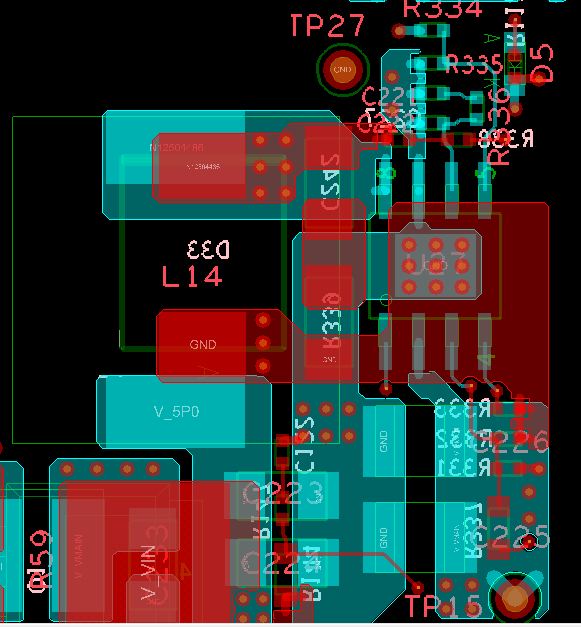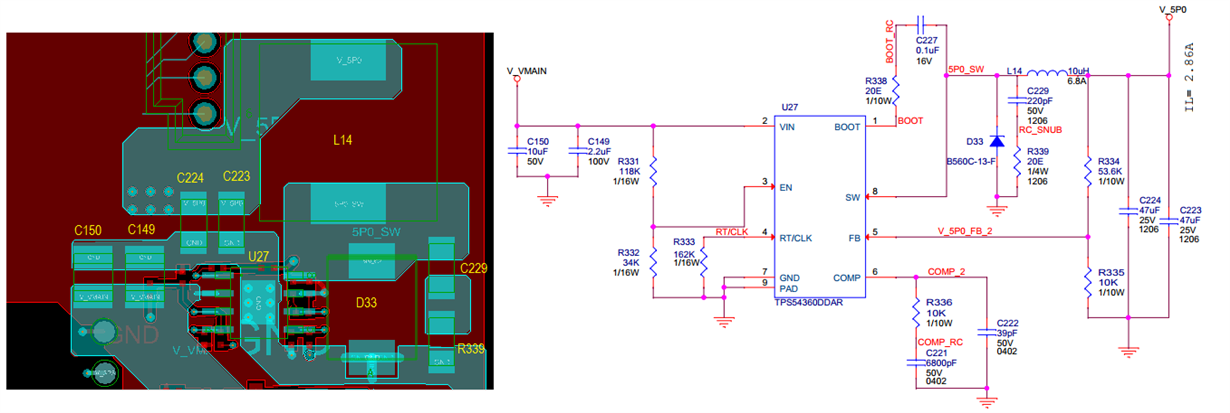Hi,
I am using TPS54360 in one of my projects and I have its radiated emission graph here. Could you please help me reduce it. We do not have luxury of space for inserting a common mode choke on the board.
W have no traces running over plane splits to contribute to radiation and all the signals have at least one continuous ground plane adjacent to it..
The load is approximately 3A @5V.
Is snubber really recommended for TPS54360? else, will the snubber shown here contribute to radiation?
attached is the placement also
Green shows top layer and Red indicates bottom layer.
Thanks in advance
Abin





